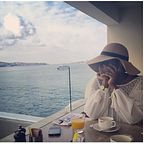Amplifying Conflict And Terror Through Social Media
0603hrs, 0703hrs, 0803hrs; research suggest these times in the morning as the peaks for when we check our mobile devices and log on to social media for updates on what happened while we were sleeping. War, violence and terrorism are usually the first bits of news that come up. YouTube, Facebook and Twitter as the key social media platforms now deployed in the forefront of various conflicts around the world, from Boko Haram in Nigeria and The Islamic State of Iraq and the Levant (ISIL) gaining new ground to the opposition leader getting killed in Russia.
On Sunday March 1st 2015, Twitter founder, Jack Dorsey, received an open death threat from ISIL after their Twitter accounts had been blocked in line with the platform’s policy. The threat was pasted on another social media site — Pastebin. According to the Brookings Institution, there are at least 46, 000 Twitter accounts linked to ISIS even though not all of them are active. ISIL’s use of social media suggests that they have a robust social media strategy and a dedicated engagement team to seed their narrative and ensure control on their messaging. It also means they can identify and recruit supporters and further push their terror campaigns; which they sometimes do through dedicated hashtags. In 2014, an app called Fajr-al-Bashaer (Dawn of Good Tidings) developed by ISIL was made available on Google Play, further proof of how tech-savvy they are. ISIL infamously launched its use of video with the filmed execution of American James Foley. The organization also has an online magazine which can be downloaded in PDF form called ‘The Islamic State Report’. It is clear that they understand the importance of communications as a valuable tool . However, not all agree. Max Abrahms, terrorism analyst and political scientist from Northwestern University, believes that the effectiveness of the social media propaganda by ISIL is widely overstated.
In comparison to ISIL, Boko Haram in Nigeria are nowhere as sophisticated as but nevertheless use videos to push their messaging. These videos usually feature their leader, Abubakar Shekau, giving enthusiastic speeches in Arabic and/or Hausa, flanked by armed weaponry and foot soldiers (also brandishing weapons) as he gives a warning on impending terror or takes responsibility for a recent act of violence. The videos are often placed on YouTube and they have found it to be an effective way to update the public on their campaign to propagate terror. As expected, Boko Haram seem to be increasingly understudying ISIS; their latest video released on March 2nd, 2015 had French subtitles and was slickly titled ‘The Harvest of the Spies’. Another interesting point to note is that security experts who have closely followed the videos have alleged that the original Shekau no longer exists or is using a body double in the videos. In February 2015, Twitter also suspended an account allegedly linked to Boko Haram. The account was fairly new with only 19 tweets before it was suspended.
Another illustration of social media being widely used in conflict to provide updates, lobby for support or push messaging can be seen in the Palestinian conflict. The Gaza Strip has always been a point of contention; more lives have been lost over it than could occupy the entirety of the land, it seems. The conflict over Gaza has resulted in almost 2,000 deaths since 1998. However the most recent fighting was spurred by the killing of three Israeli students in June 2014, an act which, although not claimed by Hamas, has been attributed to them nonetheless. The killings sparked a lot of commentary on social media.
What is clear from the Gaza conflict is that regardless of sides to be taken, social media has helped advance (or at the very least, fueled)the causes on either side. Groups such as the Palestine Solidarity Campaign UK, which was founded in 1982, is the largest UK body dedicated to lobbying and protesting on behalf of Palestine. Through Facebook and Twitter they are able to disseminate their messaging and recruit members for their group.Similarly, there are groups on Facebook in support of Israelis which promote a primarily anti-Hamas and anti-Palestine message.
In the Russian-Ukrainian conflict, social media has been a tool both parties have used effectively, and sometimes with questionable results. The 2014 Malaysia Airlines MH17 plane crash illustrates the risks of using social media in conflict.The pro-Russian rebel sect in Donetsk, Ukraine, posted on the Russian social networking site VKontakte: [translated from Russian] ‘In the area of Torez, we just shot down an AN-26 airplane, it’s lying around somewhere behind the ‘Progress’ mine,”.“We did warn after all — not to fly in our ‘sky.’ And here is a video confirmation of yet another ‘birdfall. The statement was eventually taken down but the damage had been done, it had gone viral.
On February 27th, 2015, Russian opposition politician, Boris Nemstov, was murdered on the streets of Moscow. In the hours that followed, people turned to social media to discuss and air their views. Reactions were a mélange of disbelief and sadness; followed with allegations of government involvement that Russian President Vladimir Putin has denied while vowing to find the killers. The BBC reports that his lawyer alleged he had received death threats via social media though these have not been directly linked to the murder. Nemstov’s last tweet was a call to action urging people to join him in an anti-war protest on March 1st made headlines and has since been retweeted over 1,900 times reaching an estimated number of over 74,898 accounts.
Irrespective of the platform of new media used, the outcome is often the same. Social media has the ability to magnify a message; an inherent power that makes it the new frontier in war, terror and conflict.
